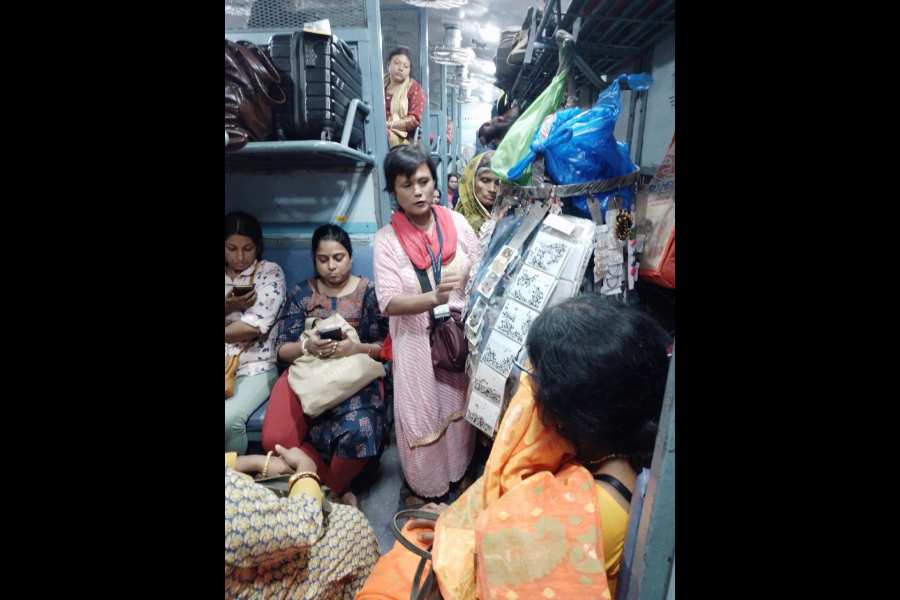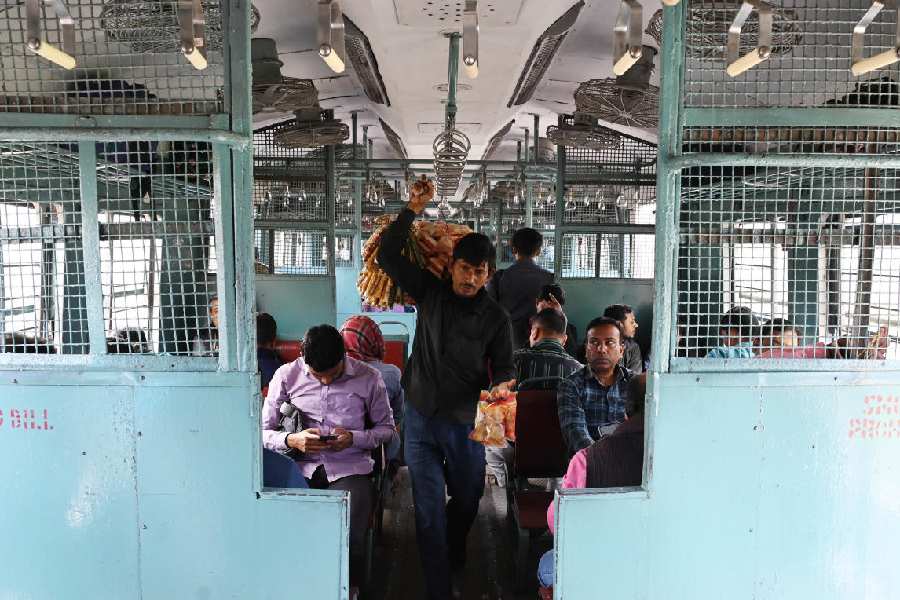No, it has not made ripples, much less headlines, but in 2023 there was a clutch of reports about the skirmishes between the Railway Protection Force (RPF) and railway hawkers. Central Railway spokesperson Shivraj Manaspure announced last November that the RPF’s anti-hawker squad on Central Railway registered 21,749 cases and arrested 21,736 persons while recovering Rs 2.7 crore in fines. There have been reports of hawker eviction drives from Eastern Railway stations too. Hawkers allege that there have been several incidents of scuffles with the RPF, stalls being dismantled and goods confiscated.
“Since our Prime Minister Modiji had been a tea vendor at a railway station, we had hoped he would take steps to legalise our profession. Instead...,” says Dipak Saha, 58, a railway hawker for the last 40 years.
No, there has never been any effort to take an official count of railway hawkers. But, according to hawker organisations such as the National Hawker Federation or the Hawker Sangram Committee, there are around 77 lakh hawkers in India. Most of them sell merchandise to train passengers and are referred to as “running hawkers” or “canvassers” while others sell their wares in makeshift stalls in railway stations.
There has never been any effort to take stock of hawker numbers possibly because this giant workforce is not acknowledged by India’s policymakers. But Section 144 of the Railways Act, 1989, dubs their work a punishable offence — the punishment for it being
a maximum of a year’s imprisonment or a fine of Rs 2,000 or both. And the latest to put a spanner in the very existence of railway hawkers is apparently the central government’s Amrit Bharat Station Scheme.
The scheme, announced in 2023, has to do with “upgrading and modernising train stations”, but many of the hawkers The Telegraph interviewed seem to believe that it is an anti-hawker move.
The railway hawker comes in all kinds of sizes and shapes. Dipak Saha, who peddles his wares in suburban trains plying between Serampore and Tarakeswar, started out when he was 15 years old. He says, “I was forced to after my father suffered a stroke.” After having experimented with different items, he now peddles ayurvedic products such as digestive golis/tablets, purgatives and churans. On a good day he makes Rs 500. There are four people in his family, including his ailing mother. For the last few months, Saha says, he has been battling “false allegations” of theft from RPF personnel.
I meet a group of hawkers at Bally station on the Howrah-Burdwan chord line. There are seven-eight of them that day, women and men. They have a spot here where they regularly meet beyond rush hour. They have recently come together to form the Bangiya Hawker Sammelan, which is basically a union for the rights of railway hawkers. The outfit has around 30,000 members.
Two of the women hawkers, Mousumi Banerjee and Monica Sen, talk about their recent ordeals. Mousumi, who is in her 40s, sells hosiery — socks, handkerchiefs, caps — in ladies’ compartments in the Howrah-Seoraphuli route. She exhibits her wares on a heavy contraption of portable hangers which she moves from train to train. She says, “Last month, when the train reached Serampore, railway police made a grab for my things and asked me to get out of the train. But the passengers stood up for me. Their protest warded off the police.”
Mousumi and Monica stress the fact that both hawkers and passengers have a convivial dependency. “They need us as much as we need them,” says Monica.

Monica Sen Photo by Pradip Sanyal
When I accompanied Saha on the Howrah-Tarakeswar local, then too I noticed how the passengers seemed to have been looking out for him. Some asked where he had been the last few weeks. Another 60-something man joked that without Saha his mornings had become unbearable; he was alluding to the purgative Saha peddles. A younger passenger bought two packs of hajmi from him and then proceeded to give a long explanation as to why he was buying them for his wife who was etc. etc.
Mousumi narrates how some customers offer her “bonus” and “gifts” during the festive season. Both women are the principal breadwinners of their families. “In our union, there are around 1,500 women members,” says Mousumi.
Men or women, Saha or Mousumi or Monica, the stories are not all that different. As the sun goes down on the bend of the railway track, Monica narrates how she lost her father to blood cancer when she was barely out of her teens. He too was a hawker who sold a variety of stuff on suburban trains.
“While he was bedridden, I started selling peanuts and crisps. Those days you wouldn’t find too many women hawkers,” she says. After her father passed away, Monica assumed the responsibility of running the family of four — two siblings and her mother.
Her narrative gets drowned as the super-fast Rajdhani Express appears out of nowhere, rips through the moment. “It’s nearly 5, I must wrap up fast,” says Monica. She wakes up at the crack of dawn and rushes to catch the Ganadevta Express from her home in Seoraphuli. The train leaves for Azimganj, near Murshidabad, at 6.10am from Howrah station.
Six months ago, she too was picked up by the railway police who accused her of stealing. Monica hastily says goodbye; she has another couple of hours of work left.
In the meantime, another hawker, Sheikh Sahanur Hossain, arrives with tea in bhnaars. He is full of complaints. The railway police demolished a shanty beside Ambika Kalna station where one of his hawker friends had been living. “They want to beautify all stations before they are sold to big corporate houses,” he says, seething with anger. Apparently the “illegal” shanty had been there for decades and was home to many, some of whom were railway hawkers.
The president of the Bangiya Hawker Sammelan, Siddhabrata Das, says, “There is an urgent need to legalise hawking in trains and railway stations because the government has failed to offer employment to millions of discerning youth in the country.” According to him, hawkers are the driving force behind hundreds and thousands of indigenous small enterprises scattered across India. Hawkers sell their products with a slim margin of profit, benefiting those consumers who have minimum buying power.
Hawking or vending is the act of selling goods for a living. It is one of the oldest occupations in India and by virtue of Article 19(1)(g), every citizen has a right to carry on any lawful trade or business.
Das too is of the opinion that the Amrit Bharat Station Scheme is an excuse to hand over the huge unorganised sector to big corporations. He says, “Just like at the airports, people won’t find any hawkers in Amrit Bharat railway stations but swanky stalls selling a cup of tea for Rs 50.”
Last September, hundreds of hawkers held protest rallies in front of the office of the divisional railway manager at Howrah. Hawkers like Saha hope a peaceful struggle against the government will force the authorities to revise their lofty scheme. He says, “We are not criminals, we contribute to the country’s economy.”










